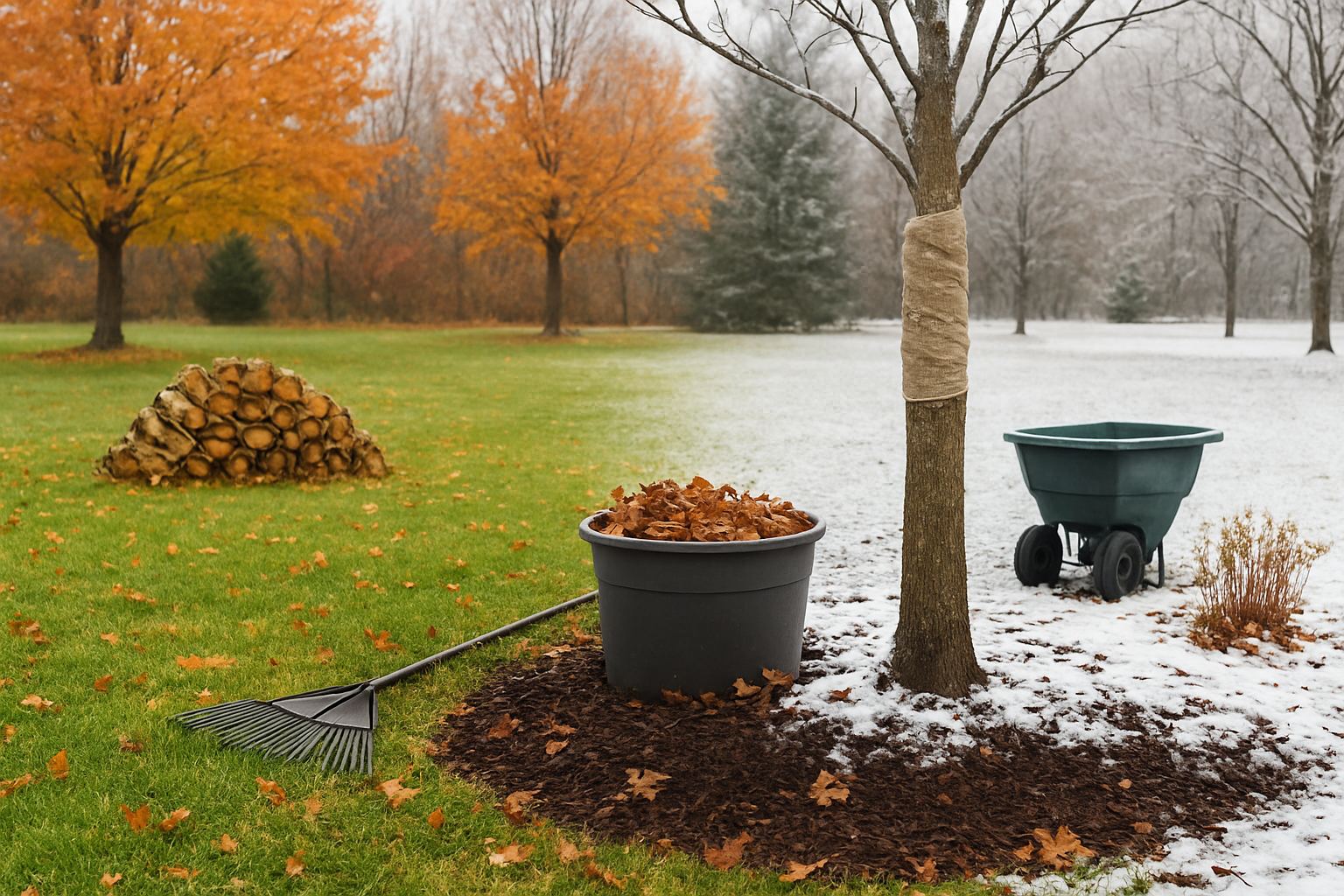❄️ How to Prepare Your Landscape for Winter
As temperatures drop and the days get shorter, your yard needs some extra attention to stay healthy through the cold months ahead.
A little preparation now can prevent damage from frost, snow, and wind—and set your landscape up for a strong comeback in spring.
Here’s LawnMart’s step-by-step guide on how to prepare your landscape for winter the smart, sustainable way.
🍂 1.
Clean Up — But Not Too Much
Before winter sets in, tidy up your yard to remove debris that can harbor pests or disease.
Rake up excess leaves, especially from lawns and pathways.
Trim back dead annuals and spent flowers.
Remove fallen fruit and branches that can attract wildlife or fungi.
💡 LawnMart Tip: Leave some leaf litter and seed heads around garden edges for pollinators and birds—nature’s free winter habitat.
🌱 2.
Protect Your Lawn
Fall is the final opportunity to strengthen your grass before it goes dormant.
Aerate and overseed to improve soil health and fill bare patches.
Apply a slow-release fall fertilizer to build deep, strong roots.
Keep mowing until growth slows, leaving blades about 2.5–3 inches tall.
Water occasionally through late fall if rainfall is low.
💡 LawnMart Tip: Avoid walking on frozen grass—it can damage fragile roots beneath the frost.
🌳 3.
Mulch and Protect Garden Beds
Mulching is one of the best defenses against winter stress.
Apply 2–3 inches of mulch around trees, shrubs, and perennials.
Keep mulch a few inches away from trunks and stems to prevent rot.
Use shredded leaves, straw, or wood chips as natural insulators.
Mulch helps regulate soil temperature, conserve moisture, and reduce frost heaving.
🪴 4.
Care for Trees and Shrubs
Young or tender trees need extra protection from wind and freezing temperatures.
Wrap trunks of young trees with burlap or tree guards to prevent cracking and sunscald.
Stake newly planted trees to stabilize them through strong winter winds.
Water deeply before the first hard freeze to hydrate roots.
💡 LawnMart Tip: Apply a layer of compost under trees before mulching—it boosts soil health and improves spring growth.
🌼 5.
Prepare Perennials and Flower Beds
Perennials can survive winter easily if properly prepped.
Cut back spent foliage (except those that provide winter interest, like ornamental grasses).
Divide crowded plants such as hostas and daylilies.
Add compost or organic fertilizer to replenish nutrients.
If you’re planting spring bulbs, this is the time to do it—before the ground freezes!
💧 6.
Drain and Store Garden Tools & Equipment
Protect your investment by storing tools and irrigation systems properly.
Drain hoses and irrigation lines to prevent cracking from ice.
Clean and oil garden tools to prevent rust.
Store lawn mowers and trimmers in a dry area after cleaning and removing fuel.
💡 LawnMart Tip: Use LawnMart’s winterization kits for quick, easy equipment prep.
🐦 7.
Support Wildlife in Your Yard
Create a welcoming environment for birds and pollinators that overwinter locally.
Leave native grasses and seed heads standing for food and shelter.
Add bird feeders and heated water sources.
Avoid using pesticides in late fall—they can harm beneficial insects preparing for hibernation.
How to Prepare Your Landscape
for Winter
